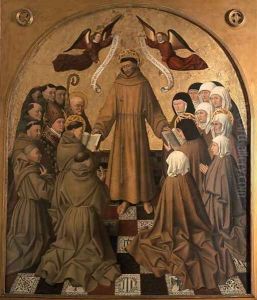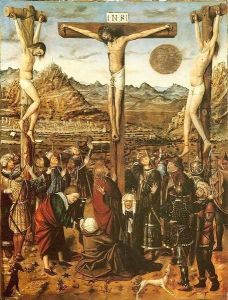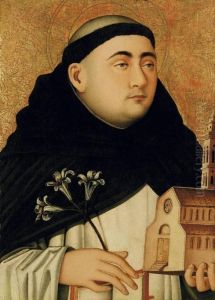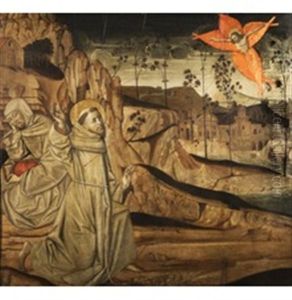Niccolo Antonio Colantonio Paintings
Niccolò Antonio Colantonio was an Italian painter active during the Early Renaissance period, primarily based in Naples. His exact birth and death dates are uncertain, but he is believed to have been born around 1420 and to have died around 1460. Not much is known about his early life or training. Colantonio is regarded as one of the most significant artists in Naples during the 15th century, and he was influential in introducing Renaissance artistic principles to the region, which at the time was under the rule of the Kingdom of Naples.
Colantonio's work bridges the late Gothic and early Renaissance styles. He was known for his detailed narrative scenes and religious compositions, often characterized by expressive figures and a rich use of color. His paintings demonstrate a keen attention to detail and an interest in the naturalistic representation of fabrics and textures, which was a significant development in the art of his region at the time.
One of Colantonio's most famous works is the 'Delivery of the Franciscan Rule,' which shows St. Francis of Assisi receiving the rule of his order from Pope Honorius III. This painting, located in the Museo Nazionale di Capodimonte in Naples, is noted for its depiction of individualized figures and an architectural setting that reflects an awareness of contemporary developments in perspective.
Despite his importance, Colantonio's oeuvre is relatively small, and few works can be securely attributed to him. His legacy is further obscured by the lack of extensive documentation on his life. Nevertheless, his influence was felt in the region, and he played a role in the transition from the Gothic to the Renaissance style in Neapolitan art. Colantonio's work is considered a precursor to that of his more famous successor, Antonello da Messina, who is credited with bringing the full development of Renaissance painting to Southern Italy.






